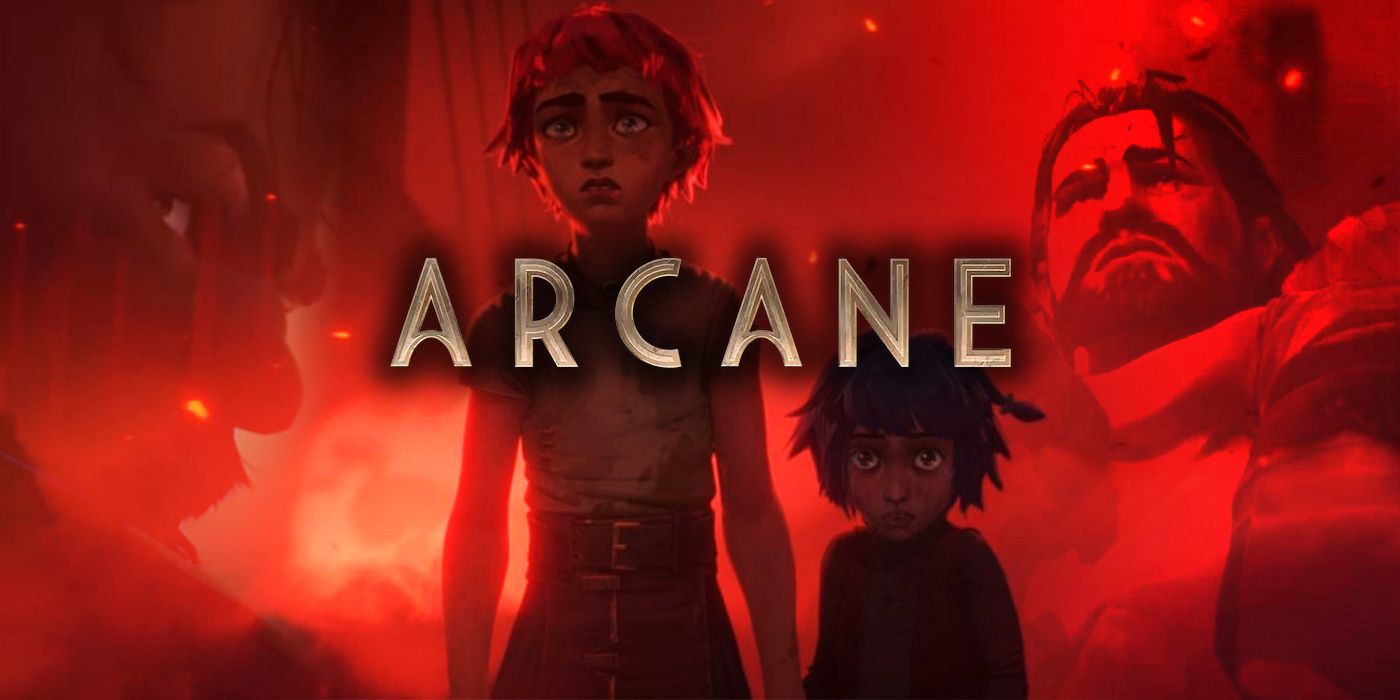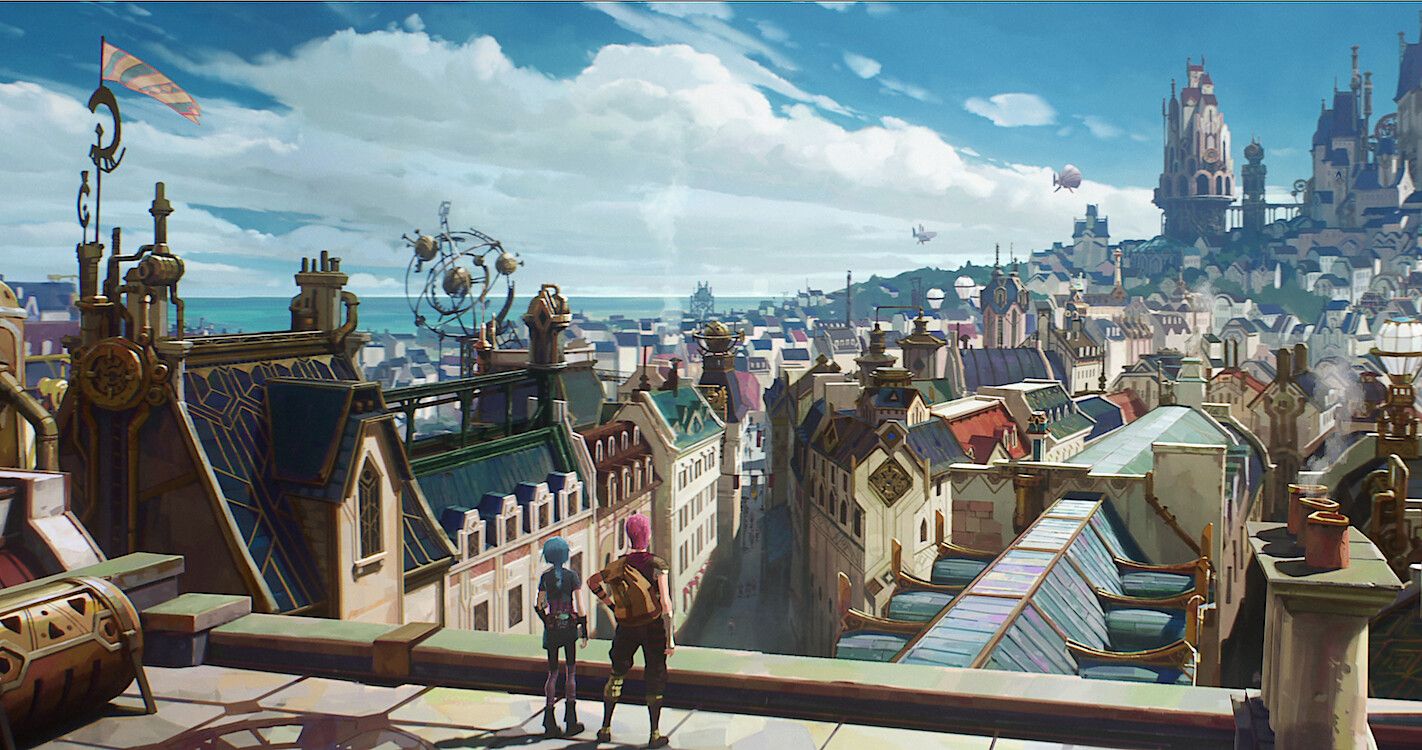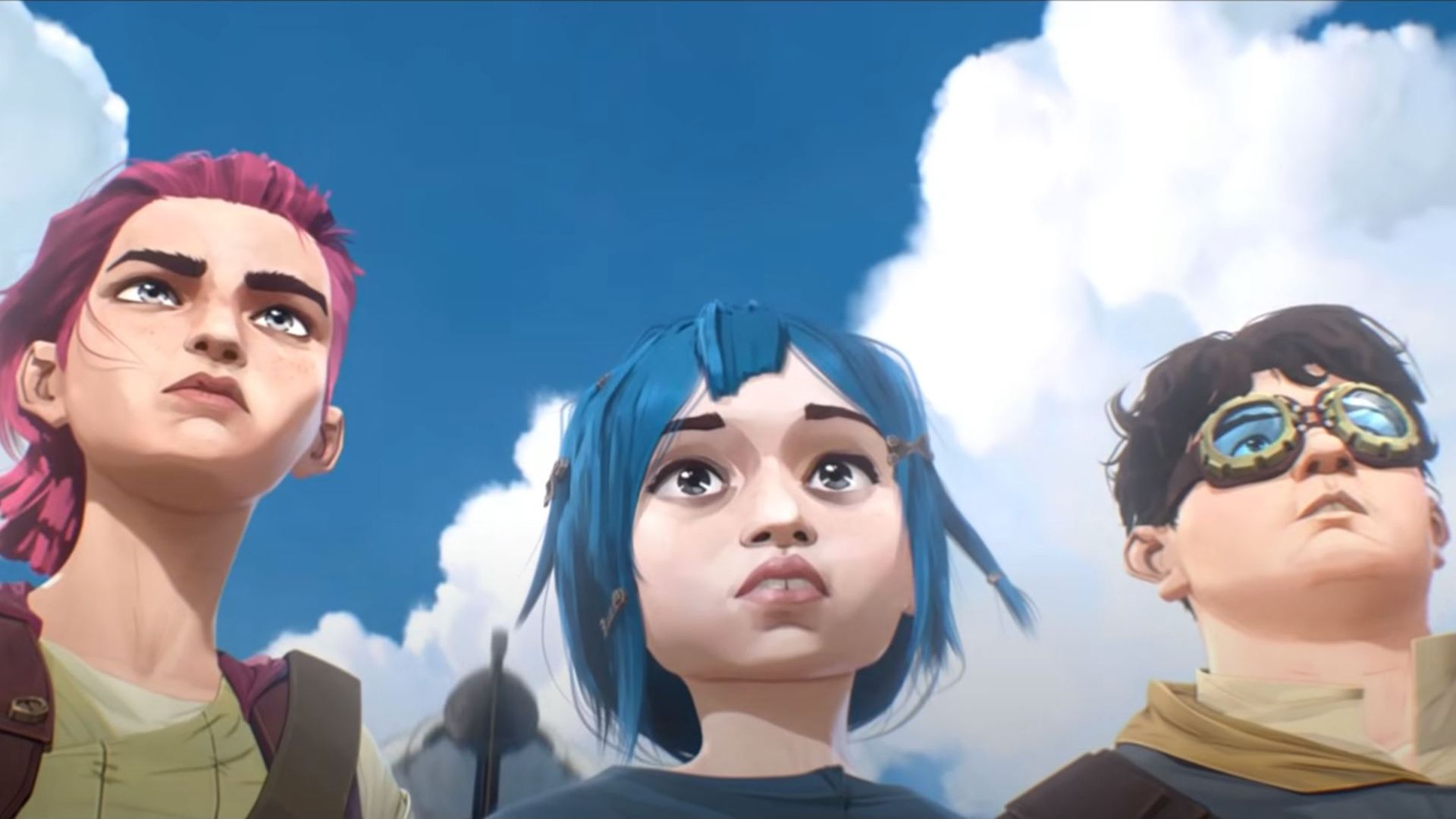Of the numerous reasons to watch the League of Legends Netflix adaptation, Arcane, is because the action scenes are definitely toward the top of the list. With fight choreography that harkens back to animator Monty Oum’s quick and inventive RWBY character movements, and colorful style and visuals on par with Into the Spider-Verse, Arcane creates a style and experience all its own. Even when the action scene doesn’t necessarily involve a fight, Arcane makes sure that viewers feel every jump, landing, and fall.
While video game adaptations have a bad reputation for being non-creative cash-grabs, Arcane uses its origin as a strength. Point-of-view is an important aspect of many of the show’s scenes, especially the opening action scene, during which there is no fight, but there is plenty of excitement. The viewer follows Vi (voiced by Hailee Steinfeld) as she scales a building in Piltover, the image blurring in and out of focus, as if whoever is looking at Vi is trying to concentrate. When Vi looks back down and past the viewer’s POV, it becomes clear that Powder (voiced by Mia Sinclair), Mylo (voiced by Yuri Lowenthal), and Claggor (voiced by Roger Craig Smith) are all below, leaving the viewer’s POV between them as if they are a player in a video game. Immediately, this places the viewer in the same situation as the characters. This nod back at Arcane’s origin is a creative way to create immersion.
Even though all four kids are from the Undercity, where impressive physical maneuvers are a necessity, it’s clear from their breathing and body language that climbing this building still requires strength and can even be a struggle, especially for Powder, who is much younger and less experienced than the others. As Vi reaches the roof, she takes a moment to rest her hands on her knees and catch her breath. When Powder arrives, she is slumping and breathing heavily. While these reactions to physical exertion are a given in real life, animation has the possibility of making their characters’ actions smoother, especially with 2D animation; in turn, this tends to make their movements look effortless. Arcane exchanges this smoother look for more haphazard movements, which make the characters look less in control, and it introduces the possibility that they could easily fall. The tensions are already high.
As Vi leads the group from rooftop to rooftop, they must jump from one building’s balcony to another’s roof in order to reach their destination. As Mylo slides down the sloped roof, he slams to a stop at what looks to be the gutter, and the image shakes with the impact. The quick succession of footwork that follows (swinging from the top of the roof, stepping along the balcony’s railing, twisting around, and jumping) feels almost too fast to follow, implying that Mylo has done this many times before and that the fact that he’s experienced doesn’t take away the threat of falling. When he jumps, the viewer’s POV follows as he hangs in the air and lands on all fours, clearly braced for the landing. Claggor’s landing has even more weight, even though he lands off-screen. The impact startles Mylo and shakes the image again.
Powder’s jump is less calculated and more haphazard. The initial slide down to the gutter, which seemed to be the easiest part for the other three, is shown from Powder’s inexperienced and nervous perspective. The angle of the roof’s slope is far steeper than it looked from other perspectives. When Powder slams against the gutter, she bounces back against the roof before swinging onto the railing, and when she turns around to jump, the railing sways with her weight. The most nerve-wracking shot is when Powder lands on the other side but stumbles and falls back. As she swings her arms to gain purchase, the shot tilts with her, creating the queasy sensation of falling that’s felt in the viewer as much as it’s experienced by the character.
Even when the characters are not specifically doing anything physically taxing, the implications of what could happen are evident in the way the scene is presented. As the four kids carefully shuffle along a narrow section of the roof, Vi and Claggor argue over what Vander would say about their unpermitted mission. As Claggor makes his point, the viewer’s POV swings over to Vi next to him, reinforcing the idea that the viewer is welcomed as a part of Arcane’s world.
These types of POV shots and “camerawork” (the animation is cinematic in that it feels like there is a camera when there isn’t) place the viewer directly in the body of the characters so that it's easy to become immersed in the world and invested in these people’s lives. Every action has a weight to it, which mirrors the concepts that Arcane presents in terms of cause and effect as well: there are always consequences for a character’s actions. It would be a leap in logic to say that Arcane’s opening action scene, during which every movement of the characters impacts the world around them even in small ways like a swaying balcony railing, foreshadows the tragedy to come when characters make mistakes and are faced with the consequences. But it is a similar concept, one that Arcane keeps consistent throughout.
In addition to the POV shots and weighted character actions, Arcane uses a combination of 2D and 3D elements, which give the show its own unique style (props to the animation studio, Fortiche). For instance, backgrounds that look painted are placed behind video game-style character models. Arcane’s action scenes benefit from this mashup of animation, as 2D is used for effects like tears, which add emotional weight to a scene, and spit, which adds to the gritty realism of fights. These 2D effects are used on 3D characters, seamlessly incorporated so as not to be distracting. In this way, Arcane presents the best of both worlds by combining the possibilities of 2D animation with the realism (and style) that can be achieved through 3D.
Arcane creates the perfect storm by embracing its video-game origin, using cinematic POV shots to reinforce the realness of the world around the characters and how they interact with it, and experimenting with creative multilayered animation. All of these techniques are evident from the very first action scene, promising more to come (and Arcane delivers). The result is a show with weighty action scenes with characters and situations that feel real and leave a huge impact.



